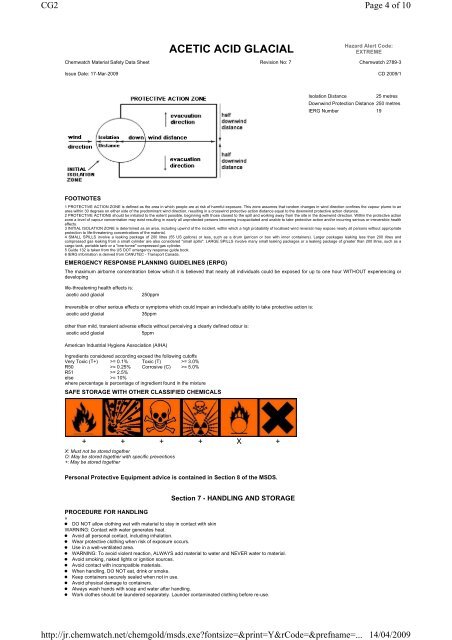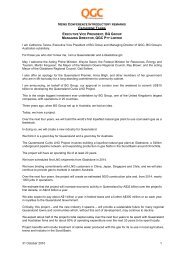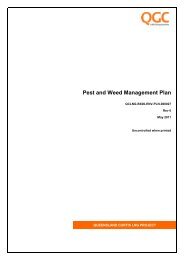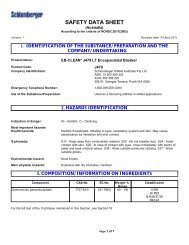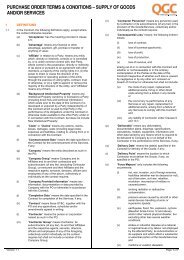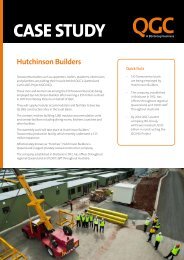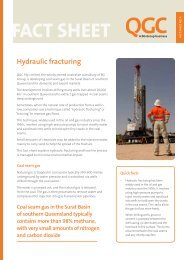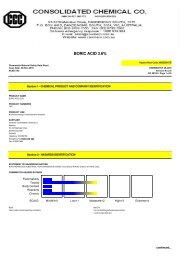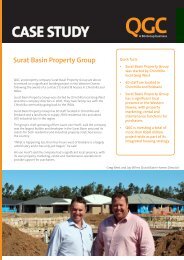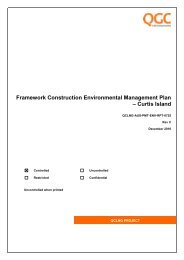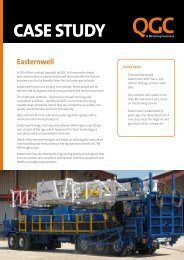CG2http://jr.chemwatch.net/chemgold/msds.exe?fontsize=&print=Y&rCode=&prefname=...Page 4 of 1014/04/2009ACETIC ACID GLACIALHazard Alert Code:EXTREMEChemwatch Material Safety Data Sheet Revision No: 7 Chemwatch 2789-3Issue Date: 17-Mar-2009 CD 2009/1Isolation Distance25 metresDownwind Protection Distance 250 metresIERG Number 19FOOTNOTES1 PROTECTIVE ACTION ZONE is defined as the area in which people are at risk of harmful exposure. This zone assumes that random changes in wind direction confines the vapour plume to anarea within 30 degrees on either side of the predominant wind direction, resulting in a crosswind protective action distance equal to the downwind protective action distance.2 PROTECTIVE ACTIONS should be initiated to the extent possible, beginning with those closest to the spill and working away from the site in the downwind direction. Within the protective actionzone a level of vapour concentration may exist resulting in nearly all unprotected persons becoming incapacitated and unable to take protective action and/or incurring serious or irreversible healtheffects.3 INITIAL ISOLATION ZONE is determined as an area, including upwind of the incident, within which a high probability of localised wind reversal may expose nearly all persons without appropriateprotection to life-threatening concentrations of the material.4 SMALL SPILLS involve a leaking package of 200 litres (55 US gallons) or less, such as a drum (jerrican or box with inner containers). Larger packages leaking less than 200 litres andcompressed gas leaking from a small cylinder are also considered "small spills". LARGE SPILLS involve many small leaking packages or a leaking package of greater than 200 litres, such as acargo tank, portable tank or a "one-tonne" compressed gas cylinder.5 Guide 132 is taken from the US DOT emergency response guide book.6 IERG information is derived from CANUTEC - Transport Canada.EMERGENCY RESPONSE PLANNING GUIDELINES (ERPG)The maximum airborne concentration below which it is believed that nearly all individuals could be exposed for up to one hour WITHOUT experiencing ordevelopinglife-threatening health effects is:acetic acid glacial250ppmirreversible or other serious effects or symptoms which could impair an individual's ability to take protective action is:acetic acid glacial35ppmother than mild, transient adverse effects without perceiving a clearly defined odour is:acetic acid glacial5ppmAmerican Industrial Hygiene Association (AIHA)Ingredients considered according exceed the following cutoffsVery Toxic (T+) >= 0.1% Toxic (T) >= 3.0%R50 >= 0.25% Corrosive (C) >= 5.0%R51 >= 2.5%else >= 10%where percentage is percentage of ingredient found in the mixtureSAFE STORAGE WITH OTHER CLASSIFIED CHEMICALS+ + + + X +X: Must not be stored togetherO: May be stored together with specific preventions+: May be stored togetherPersonal Protective Equipment advice is contained in Section 8 of the MSDS.Section 7 - HANDLING AND STORAGEPROCEDURE FOR HANDLING» DO NOT allow clothing wet with material to stay in contact with skinWARNING: Contact with water generates heat. Avoid all personal contact, including inhalation. Wear protective clothing when risk of exposure occurs. Use in a well-ventilated area. WARNING: To avoid violent reaction, ALWAYS add material to water and NEVER water to material. Avoid smoking, naked lights or ignition sources. Avoid contact with incompatible materials. When handling, DO NOT eat, drink or smoke. Keep containers securely sealed when not in use. Avoid physical damage to containers. Always wash hands with soap and water after handling. Work clothes should be laundered separately. Launder contaminated clothing before re-use.
CG2http://jr.chemwatch.net/chemgold/msds.exe?fontsize=&print=Y&rCode=&prefname=...Page 5 of 1014/04/2009ACETIC ACID GLACIALHazard Alert Code:EXTREMEChemwatch Material Safety Data Sheet Revision No: 7 Chemwatch 2789-3Issue Date: 17-Mar-2009 CD 2009/1 Use good occupational work practice. Observe manufacturer's storing and handling recommendations. Atmosphere should be regularly checked against established exposure standards to ensure safe working conditions are maintained. Containers, even those that have been emptied, may contain explosive vapours. Do NOT cut, drill, grind, weld or perform similar operations on or near containers.SUITABLE CONTAINER» Lined metal can. Lined metal drum. Lined metal safety cans. Packing as supplied and/or recommended by manufacturer. Plastic lining or containers may only be used if approved for flammable liquid(non-polar type). Check that containers are clearly labelled and free from leaks. DO NOT use aluminium or galvanised containersFor low viscosity materials Drums and jerricans must be of the non-removable head type. Where a can is to be used as an inner package, the can must have a screwed enclosure.For materials with a viscosity of at least 2680 cSt. (23 deg. C) and solids (between 15 C deg. and 40 deg C.): Removable head packaging; Cans with friction closures and low pressure tubes and cartridgesmay be used.-Where combination packages are used, and the inner packages are of glass, porcelain or stoneware, there must be sufficient inert cushioning material incontact with inner and outer packages unless the outer packaging is a close fitting moulded plastic box and the substances are not incompatible with theplastic. Check regularly for spills and leaks Glass container is suitable for laboratory quantities DO NOT use mild steel or galvanised containersIn accordance with ADG Code 5.9.8. Bulk transport by Road Tankers complying with construction standards RT1 or RT7STORAGE INCOMPATIBILITY» Reacts with mild steel, galvanised steel / zinc producing hydrogen gas which may form an explosive mixture with air.<strong>Acetic</strong> acid: vapours forms explosive mixtures with air (above 39 C.) reacts violently with bases such as carbonates and hydroxides (giving off large quantities of heat), oxidisers, organic amines, acetaldehyde, potassiumtert-butoxide reacts (sometimes violently), with strong acids, aliphatic amines, alkanolamines, alkylene oxides, epichlorohydrin, acetic anhydride, 2-aminoethanol,ammonia, ammonium nitrate, bromine pentafluoride, chlorosulfonic acid, chromic acid, chromium trioxide, ethylenediamine, ethyleneimine, hydrogenperoxide, isocyanates, oleum, perchloric acid, permanganates, phosphorus isocyanate, phosphorus trichloride, sodium peroxide, xylene attacks cast iron, stainless steel and other metals, forming flammable hydrogen gas attacks many forms of rubber, plastics and coatings Avoid strong bases. Segregate from alkalies, oxidising agents and chemicals readily decomposed by acids, i.e. cyanides, sulfides, carbonates.STORAGE REQUIREMENTS» Store in approved flammable liquid storage area. No smoking, naked lights/ignition sources. Keep containers securely sealed. Store away from incompatible materials in a cool, dry, well-ventilated area. Protect containers against physical damage and check regularly for leaks. Storage areas should be clearly identified, well illuminated, clear of obstruction and accessible only to trained and authorised personnel - adequatesecurity must be provided so that unauthorised personnel do not have access. Store in grounded, properly designed and approved vessels and away from incompatible materials Store according to applicable regulations for flammable materials for storage tanks, containers, piping, buildings, rooms, cabinets, allowable quantitiesand minimum storage distances. Use non-sparking ventilation systems, approved explosion proof equipment and intrinsically safe electrical systems. Have appropriate extinguishing capability in storage area (e.g. portable fire extinguishers - dry chemical, foam or carbon dioxide) and flammable gasdetectors. Keep adsorbents for leaks and spills readily available For bulk storages, consider use of floating roof or nitrogen blanketed vessels; where venting to atmosphere is possible, equip storage tank vents withflame arrestors; inspect tank vents during winter conditions for vapour/ ice build-up; storage tanks should be above ground and diked to hold entirecontents Observe manufacturer's storing and handling recommendations.EXPOSURE CONTROLSSection 8 - EXPOSURE CONTROLS / PERSONAL PROTECTIONSource Material TWA ppm TWA mg/m³ STEL ppm STEL mg/m³ Peak ppm Peak mg/m³ TWA F/CCAustralia Exposure Standards acetic acid glacial (<strong>Acetic</strong> acid) 10 25 15 37EMERGENCY EXPOSURE LIMITSMaterial Revised IDLH Value (mg/m3) Revised IDLH Value (ppm)acetic acid glacial 50MATERIAL DATA» for acetic acid:NOTE:Detector tubes for acetic acid, measuring in excess of 1 ppm, are commercially available.Exposure at or below the TLV-TWA and TLV-STEL is thought to protect the worker against conjunctival, nose and respiratory tract irritation.Odour Safety Factor(OSF)OSF=21 ("ACETIC ACID, GLACIAL").PERSONAL PROTECTION


